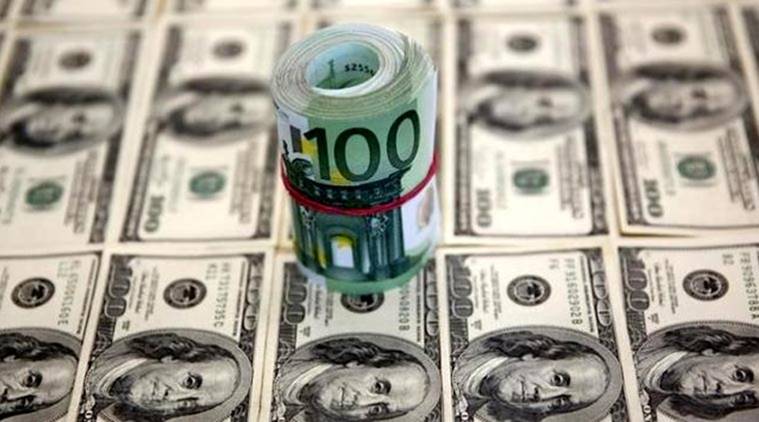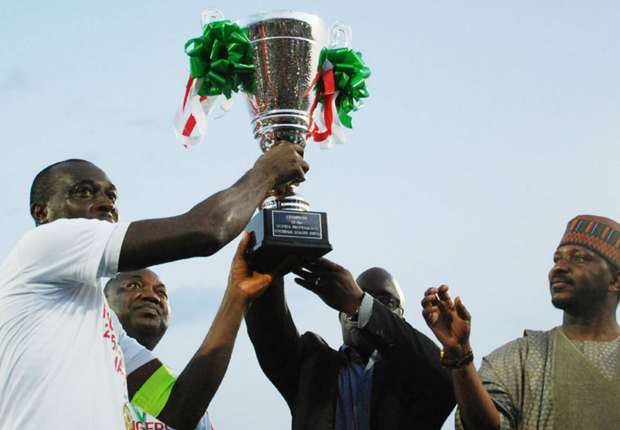TVC NEWS North Korea’s leader Kim Jong Un watches a military drill marking the 85th anniversary of the establishment of the Korean People’s Army (KPA) in this handout photo by North Korea’s Korean Central News Agency (KCNA) made available on April 26, 2017.
North Korea test-fired a ballistic missile on Saturday shortly after U.S. Secretary of State Rex Tillerson warned that failure to curb Pyongyang’s nuclear and ballistic missile programs could lead to “catastrophic consequences”.
U.S. and South Korean officials said the test, from an area north of the North Korean capital, appeared to have failed, in what would be the North’s fourth straight unsuccessful missile test since March.
The test came as the USS Carl Vinson aircraft carrier group arrived in waters near the Korean peninsula, where it will join the USS Michigan, a guided missile submarine that docked in South Korea on Tuesday.
Tillerson, in a U.N. Security Council meeting on North Korea on Friday, repeated the Trump administration’s position that all options were on the table if Pyongyang persisted with its nuclear and missile development.
“The threat of a nuclear attack on Seoul, or Tokyo, is real, and it’s only a matter of time before North Korea develops the capability to strike the U.S. mainland,” Tillerson said.
“Failing to act now on the most pressing security issue in the world may bring catastrophic consequences.”
U.S. President Donald Trump, who told Reuters in an interview on Thursday North Korea was his biggest global challenge, said the launch was an affront to China, the North’s sole main ally.
“North Korea disrespected the wishes of China & its highly respected President when it launched, though unsuccessfully, a missile today. Bad!,” Trump said in a post on Twitter after the launch.
Chinese Foreign Minister Wang Yi told the U.N. meeting it was not only up to China to solve the North Korean problem.
“The key to solving the nuclear issue on the peninsula does not lie in the hands of the Chinese side,” Wang said.
In a commentary on Saturday, China’s official Xinhua news agency said both North Korea and the United States needed to tread cautiously.
“If both sides fail to make such necessary concessions, then not only will the two countries, but the whole region and the whole world end up paying a heavy price for a possible confrontation.”
Trump, in his interview with Reuters, said he had praised Chinese leader Xi Jinping for “trying very hard” on North Korea but warned a “major, major conflict” between the United States and North Korea was possible.
The North has been conducting missile and nuclear weapons related activities at an unprecedented rate and is believed to have made some progress in developing intermediate-range and submarine-launched missiles.
Tension on the Korean peninsula has been high for weeks over fears the North may conduct a long-range missile test, or its sixth nuclear test, around the time of the April 15 anniversary of its state founder’s birth.
FAILED TEST
U.S. officials, speaking on condition of anonymity, said the North Koreans had probably tested a medium-range missile known as a KN-17 and it appeared to have broken up within minutes of taking off.
The South Korean military said the missile, fired from the Pukchang region, reached an altitude of 71 km (44 miles) before disintegrating. It said the launch was a clear violation of U.N. resolutions and warned the North not to act rashly.
With North Korea acting in defiance of the pressure, the United States could conduct new naval drills and deploy more ships and aircraft in the region, a U.S. official told Reuters.
Japan condemned the launch as unacceptable and authorities stopped some train services in Japan as a precaution, in case the missile had been fired at Japan, a transit system spokesman said.
A Japanese military official said its navy on Saturday completed an exercise with the Carl Vinson in the channel separating the Korean peninsula from Japan, meaning the U.S. carrier had arrived in the Sea of Japan.
The dispatch of Carl Vinson to the waters off the Korean peninsula is a “reckless action of the war maniacs aimed at an extremely dangerous nuclear war,” the Rodong Sinmun, the official newspaper of North Korea’s ruling Workers’ Party, said in a commentary on Saturday.
Inter-continental ballistic rockets will fly into the United States “if the U.S. shows any slight sign of provocation,” the newspaper said.
MORE SANCTIONS MOOTED
Kim Dong-yub, an expert at Kyungnam University’s Institute of Far Eastern Studies in Seoul, said North Korea might have got the data it wanted with the missile’s short flight, then blown it up in a bid to limit the anger of China, which warned Pyongyang against further provocation.
North Korea rattled world powers in February when it successfully launched a new intermediate-range ballistic missile that it said could carry a nuclear weapon. It also successfully tested ballistic missiles on March 6.
It is not clear what has caused the series of failed missile tests since then.
The Trump administration could respond to the test by speeding up its plans for new U.S. sanctions, including possible measures against specific North Korean and Chinese entities, said the U.S. official, who declined to be identified.
“Something that’s ready to go could be taken from the larger package and expedited,” said the official.
The U.N. Security Council, which traditionally condemns all missile launches by Pyongyang, is likely to start discussing a statement to condemn the missile launch, said diplomats.
But condemnations and sanctions resolutions since 2006, when North Korea conducted its first nuclear test, have done little to impede its push for ballistic missiles and nuclear arms.
The South Korean politician expected to win a May 9 presidential election, Moon Jae-in, called the test an “exercise in futility”.
“We urge again the Kim Jong Un regime to immediately stop reckless provocative acts and choose the path to cooperate with the international community,” Park Kwang-on, a spokesman for Moon, said in a statement, referring to the North Korean leader.
Moon has advocated a more moderate policy on the North and been critical of the deployment of an advanced U.S. missile defence system in the South intended to counter North Korea’s missile threat, which China also strongly objects to.





